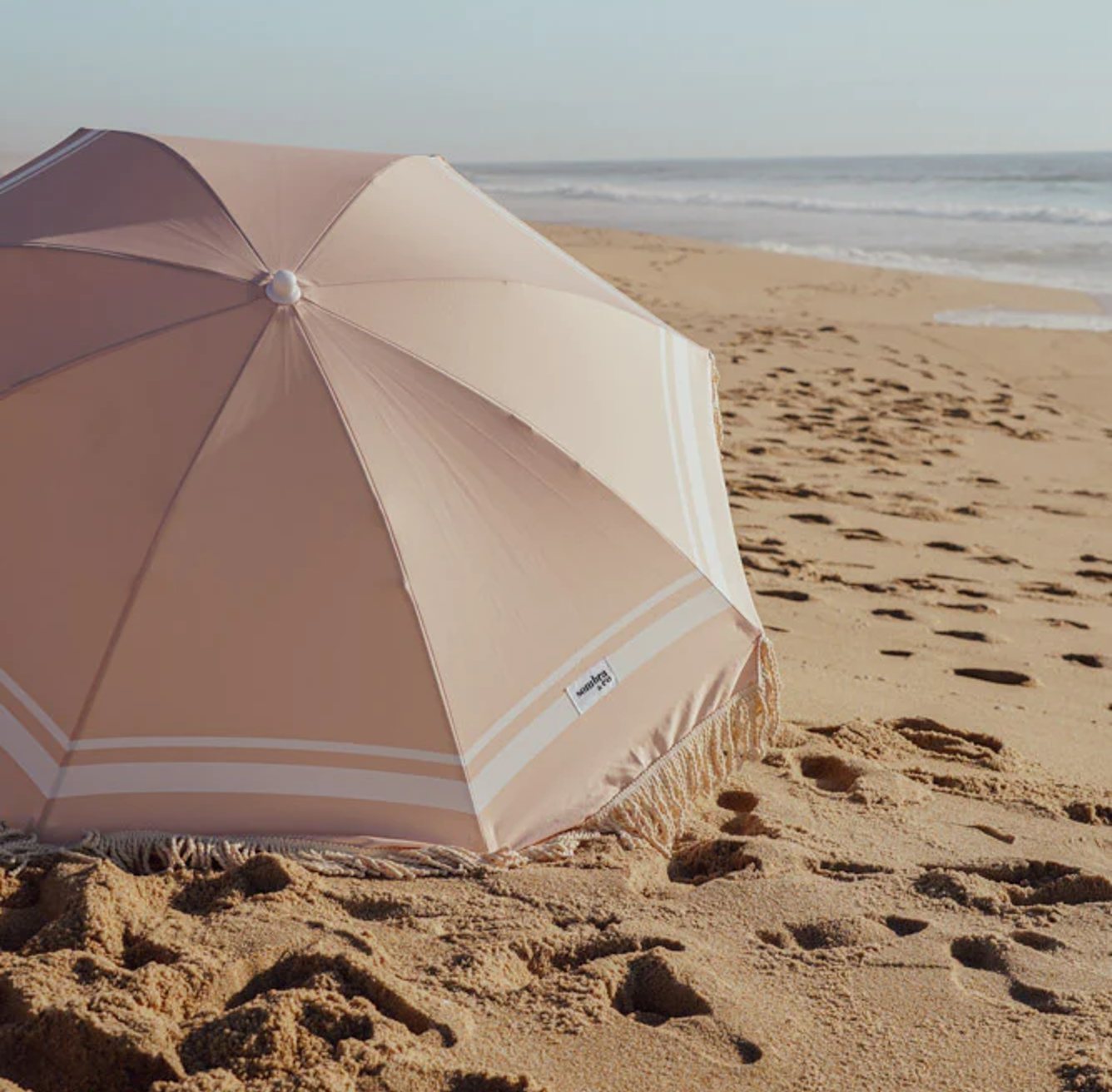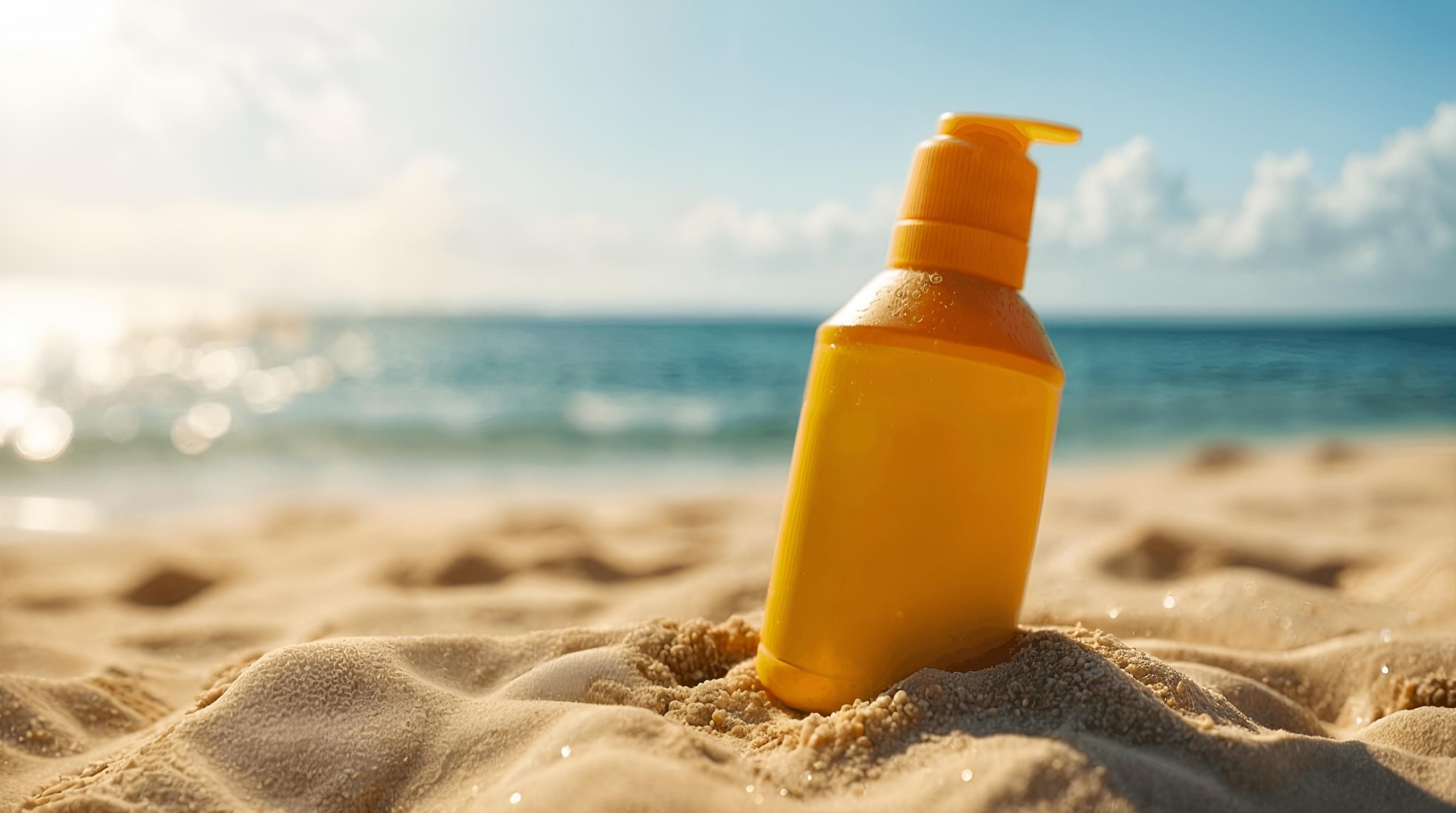The importance of sunscreen
It is true that sunbathing, when carefully, has benefits. Exposure to the sun makes our skin produce vitamin D, essential for the balance of our organism and the production of melatonin and has mood-boosting benefits. UVB radiation promotes the production of vitamin D3, essential for bone and muscle health, for the development and correct functioning of cells, and for the absorption of calcium and phosphate.
However, exposure to the sun and its ultraviolet rays (UV) rays can also have harmful effects. Did you know that even in winter it’s important to use sunscreen, especially on your face? The purpose of sunscreen is to protect the skin from external aggressions, helping to prevent skin diseases and the premature skin ageing.
A guide to choose the best sunscreen
So that you can choose the sunscreen that best suits you and your family’s needs, it is important to understand what the various acronyms and terms that are usually associated with sun exposure mean.
What is the ultraviolet index?
Also called the UV index, it is an international standard adopted by the World Health Organization (WHO) and the World Meteorological Organization (WMO) to measure the intensity of the UV radiation emitted by the sun. The scale starts at 0 and can go up to more than 11.
- UV Index 0-2: Low Risk. No need to worry. On sunnier days, use sunglasses with UV protection and sun cream with SPF 15 or higher.
- UV Index 3-5: Moderate Risk. In this case, there is a moderate risk of damage caused by unprotected sun exposure. Wear sunglasses with UV filter, hat, t-shirt, and sun cream (ideally, SPF 30 or SPF 50).
- UV Index 6-7: High Risk. You should wear sunglasses with UV filter, hat, t-shirt, and sun cream (ideally, SPF 30+ or 50). Avoid sun exposure between 11:00 a.m. and 5:00 p.m.
- UV Index 8-10: Very High Risk. You should wear sunglasses with UV filter, hat, t-shirt, and sun cream (ideally, 50 or 50+). Children should not be exposed to the sun and adults should avoid sun exposure between 11:00 a.m. and 5:00 p.m.
- UV Index 11+: Extreme Risk. Sun exposure should be avoided as much as possible, and it is recommended to stay at home or in a cool and sheltered environment.
You can check the daily UV index for your region via your local meteorological forecast service. In Portugal, visit the Portuguese Institute for the Sea and the Atmosphere (IPMA) to check the daily UV index.
What are the different types of UV rays?
There are three types of ultraviolet (UV) rays: A, B, and C.
- UVA radiation: It is the least energetic type of radiation and comprises the majority (95%) of the UV rays emitted by the sun. UVA radiation penetrates deep into the skin (dermis) and is responsible for rapid tanning, but it can also contribute to premature skin ageing, wrinkle formation and skin cancer.
- UVB radiation: It is more energetic than UVA, but does not penetrate as deeply into the skin, mainly affecting the outer layers (epidermis). This radiation constitutes about 5% of the UV rays emitted by the sun, and is responsible for late tanning, but it can also cause sunburn, skin ageing, and can contribute to the onset of skin cancer.
- UVC radiation: It’s the most energetic — and dangerous. However, this type of UV radiation is filtered through our atmosphere and does not reach the Earth’s surface.
What does SPF mean?
SPF is the acronym for Sun Protection Factor. It is represented by a number that indicates the effectiveness of protection against the sun’s radiation. Generally, SPF values in sunscreens range between 6 and 50, and in some cases, go up to 90.
The lower the SPF value indicated on the packaging of the product, the lower its protection. But, to really understand its meaning, you can use a very simple formula: divide 100 by the SPF value indicated and you will know the percentage of UV rays that the sunscreen product lets through.

For example, a sunscreen with SPF 50 “lets through” 2% of UV rays (100:50=2), so that guarantees protection against 98% of UV rays.
A sunscreen with SPF 30 blocks around 97% of UV rays and a sunscreen with SPF 15 blocks around 93% of UV rays. The difference between SPF 30 and SPF 50 may not seem much, but it is enough for those with lighter or sensitive skin – in this case, SPF 50 should be used.
The ideal sunscreen should:
- Block UVA and UVB radiation;
- Have a minimum SPF of 30, but ideally higher (for daily use and for the face, you can use SPF 15);
- Be resistant to water and friction.
What about when using sunscreen in not enough?
In addition to sunscreen, the high temperatures of summer may require other preventative measures. According to the Portuguese Health Service, these are the recommendations:
- Wear cool, light and light-coloured clothes.
- Avoid sun exposure or physical activities, especially between 11am and 5pm.
- Use sun cream with a protection index SPF equal to or greater than 30, every 2 hours, even under the umbrella and in the water.
- Keep in the shade or look for and cool, ventilated place.
- Drink water, even when you are not thirsty.
- Elderly people should not go to the beach on the hottest days.
- Children under six months should not be subjected to sun exposure and direct exposure of children under three years of age is to be avoided.
A beach umbrella that also works as a sunscreen

When Joana Carreira and Pedro Nobre, a couple in love with the sun and the sea, decided to live by the beach, they realised how difficult it was to find a quality, durable beach umbrella that offered UV protection. Entrepreneurs by nature, they combined sustainability with design, and created Sombra & Co.
Sombra & Co is a 100% Portuguese brand, which combines functionality with vintage design to recreate a traditional beach umbrella that offers not only protection from the sun, but that can also be assembled, disassembled, and transported from home to the beach, effortlessly.
With discreet colours and an elegant style, this umbrella makes Portuguese beaches look even more beautiful with its characteristic stripes – and gives a new life to plastic bottles.
More sustainable beach days
Sombra & Co umbrellas are made of canvas created from recycled plastic bottles, treated with UV protection, having an SPF of 50+. The canvas is also waterproof and fade-proof.
The umbrella’s structure is made of aluminium and has eight fibreglass rods that enable wind resistance.
These umbrellas also feature a tilt system, so you can direct them towards the sun and maximize your shade throughout the day, weighing only 3.7 kg.
Sombra & Co guarantees that the materials used provide greater quality and durability, which means that you won’t need to replace your beach umbrella every year – sparing the planet and, in the long term, your wallet.
In the same colours, made of the same canvas, and with the same UV protection, windbreakers allow to stretch out your days on the beach even when an uncomfortable wind blows.
According to the brand, the use of recycled plastic in the production of Sombra & Co parasols and windbreakers allows for a reduction of more than 70% in carbon dioxide emissions when compared to conventional models.



